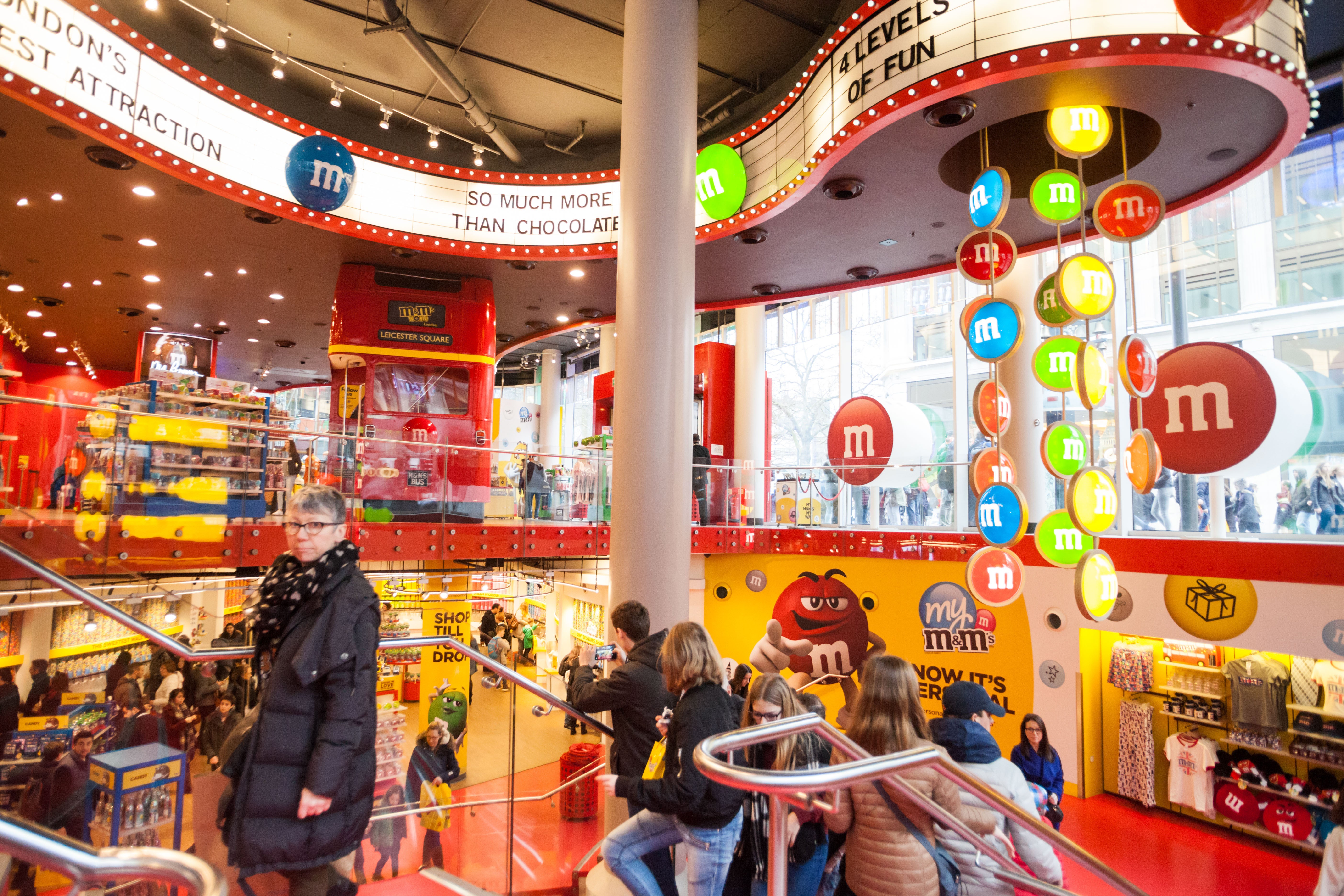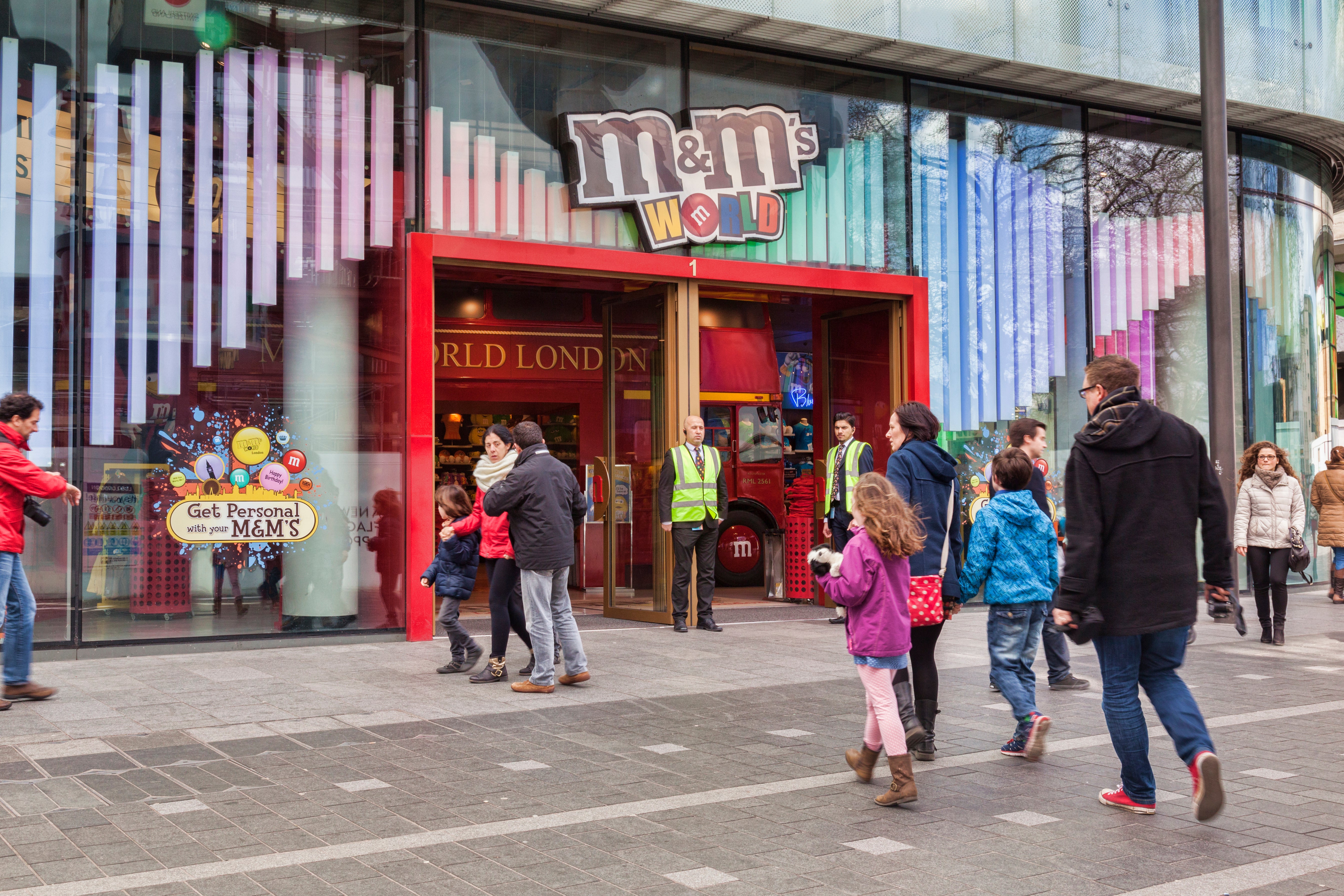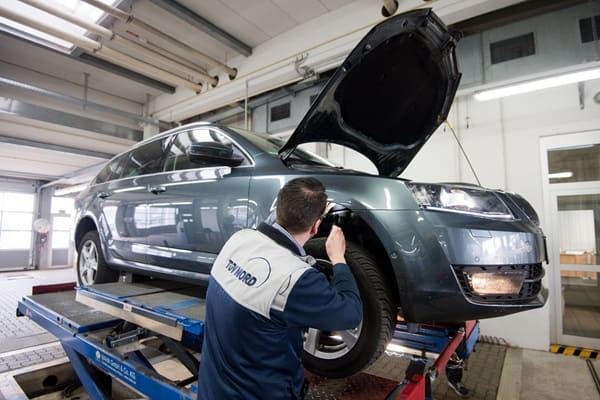World
Inside the bewilderingly popular M&M’s World

There is a dark force in the middle of Soho. Like an abyss, it swallows up light and repels hope. It corrupts all those who grow close, trapping them in its embrace. Its tiers wind in on themselves like an Escher artwork. At its hollow centre, a DayGlo spiral staircase twists upwards to look out across the wasteland that is Leicester Square. Dante thought hell had nine circles, but there is a place more terrifying than anything he imagined in the Divine Comedy, and it has four floors. I am talking, of course, about M&M’s World.
M&M’s World – a Minionified shop that sits on the corner of Leicester Square, curling back into Chinatown – has cemented itself as the empty heart of central London in its 13 years of existence. It appeared here in June 2011, taking over a site formerly occupied by the Swiss Centre. It is to this day the world’s largest candy store, clocking in at an impressive 35,000 square feet of pure, unadulterated M&M’s content. It’s one of a series of bizarre “universe” themed shopping locations imagined by the world-building execs at Mars, Incorporated – the first opened on the Las Vegas strip in 1997, followed by outposts in Florida, New York, Nevada, Shanghai, Minnesota and Berlin.
Created as part of Westminster City Council’s regeneration plan for the local area – conceived amid the rose-tinted haze of the London 2012 Olympics dream – M&M’s World was meant to make Leicester Square a “world-class destination”, akin to the remodelling of Times Square in New York that took it from a dangerous, forgotten and crime-heavy area in the 1980s to the mecca of consumerism and tourism that it is today. Which, if you have ever endured the mecca of consumerism and tourism that is Times Square, may make you wonder: why on earth would anyone want this? Times Square is an experience you endure when you go to New York because you believe you have to tick it off. It’s not something you actually enjoy; it’s something you believe you must suffer through, against your will, to complete the trip.
I have experienced M&M’s World in London, both voluntarily and against my will. The first time was when I’d just moved here, a decade ago now, when I took my then boyfriend to see it. I had lived in London for only a few weeks, had no idea what to do with my time, and M&M’s World presented itself as viable and interesting enough to distract us, albeit slightly ironically, from the fact that we didn’t have much to talk about any more. Afterwards we retreated to the now vanished Yates’s wine bar on the other side of the square, and of course, inevitably broke up under the glare of smug yellow peanut M&Ms, slutty green M&Ms and crispy blue M&Ms. It’s not something I would particularly recommend. But I suppose that I was still, then, a tourist, and it was, then, something to do.
Today I work in Soho, so I pass M&M’s World every day on my commute, and every day, in spite of myself, I am stunned by the queues outside. Once, on a rainy and glum morning in late August, I stopped to take a shameless photo of a group of 10 or so teenagers in matching backpacks, and a few depressed-looking young parents who were actually sitting on their anoraks waiting for the doors to open. The store’s opening hours make it shockingly accessible, running from 10am to 11pm six days a week and 12-6pm on Sundays. Once inside, visitors can avail themselves of walls of pick ’n’ mix-style candy for, unbelievably, £2.49 per 100g, or buy M&M plushies and M&M mugs, M&Ms with union jacks on them and M&Ms wearing crowns. If you want it, you can buy it – and will end up doing so. M&M’s World is, inevitably, as expensive as it is soulless.

“Get your finances agreed in principle before entering!” advises one harried parent on Tripadvisor. Other reviews describe it as “very overpriced” but beloved by children. “It cost an absolute fortune by the time they’d chosen their favourite colours.” Perhaps this one sums up the fallacy of M&M’s World best: “This ended up being a massive waste of time, as the store’s staggering floorspace and multiple storeys all house the exact same product: M&Ms that have been marked up to extortionate prices, and tacky T-shirts/mugs that you can find online for cheaper.” But what strikes me most is that the majority of the online reviews are unexpectedly glowing, even if one caveat is that there are “no trash cans”. Some do complain about the lack of a “unique experience” offered by M&M’s World. There are no important exotic flavours from Big Daddy M&M over in America. The only things that are quintessentially British are kitschy M&M figures dressed like the King’s Guard, or a red double-decker M&M’s bus, or a parade of four M&Ms walking along an Abbey Road-style zebra crossing.
In 2016, Patrick McIntyre, then the director of global retail at Mars, said that 13 per cent of all M&Ms sold in the UK were sold through this one store. That year, on one particularly busy Saturday during the school holidays, a record 33,000 people walked through its front doors. “That’s a tremendous amount of people through 36,000 square feet,” he told Insider Trends. “It is probably the closest in terms of truly amplifying the M&M’s brand in a completely immersive way – from standing outside in Leicester Square all the way through those four floors, having big, bold, playful and completely unexpected moments with our brand. While it is a retail space and it does make money, it is truly there to amplify what it is to be an M&M.”
What does it mean, exactly, to be an M&M? Do the people who go to M&M’s World, apparently of their own free will, know the answer? Are they amplifying what it is to be an M&M? On Instagram, people are trying. The store’s hashtag is an endless parade of images of people posing with the large plastic M&M figurines or contorting themselves into the store’s red phone box, a simulacrum of a tourist attraction that barely exists in London any more (if you really want this photo op, there’s a red phone box in Westminster with Big Ben in the background, but you also have to queue for your photos there). One person, describing on Tripadvisor the sobering reality of this uncanny M&M’s experience, writes: “If you’re looking for photo ops, consider that: you’re going to be waiting 15+ minutes to take a picture with an M&M. You’re in London, a world-class city, and have plenty of stellar photo opportunities that don’t involve M&Ms.”

This is one of my problems with M&M’s World – it’s not an actual experience, it’s an overpriced photo opportunity disguised as a physical space. For its part, it bills itself, inevitably and unsurprisingly, as an “immersive experience”. The tourism economy is driven by the force of the immersive experience, of locations and sights created and marketed to be viewed from above, from the grid. A flattening of travel to Instagram spam, a flattening of an area to an antiseptic playground. I love working in Soho, but it’s hard not to feel that it’s become a carnival of immersive experiences and endless American candy stores. Even before M&M’s World, the spaces of Leicester Square lent themselves towards this kind of empty tourism. The Swiss Centre, its predecessor, was a 14-storey building intended to be a showcase for the country of Switzerland. A bizarre concept, it featured a Swiss bank, a tourist office, a Swissair ticket office, a cafe, and several Swiss-themed restaurants located in the basement. Over its 40-year tenure, it became more and more divorced from this already tenuous concept, with many of its shops becoming vacant before it was finally demolished in 2008. Today, only the novelty clock remains. That, and M&M’s World.
Now, crowds of tourists spill out around that clock, with its pastoral figures and bells that play tunes like a glockenspiel, making Instagram-mandated laps between M&M’s World, McDonald’s, the Lego Store and the statues of Mr Bean and Harry Potter that decorate the twee social media-friendly centre of Soho. Last year, 20.8 million people visited the city. It is one of the busiest metropolises on Earth. And, more importantly, one of the most expensive. In 2023, international visitors spent an all-time high of £16.7bn in London, roughly £819 per visit, and up 18 per cent from 2019. It’s a financial sinkhole, particularly if you’re coming with young children who love chocolate and bright colours. Lonely Planet’s advertisement for the virtues of M&M’s World emphasises that it’s both weird and – crucially – free. Few experiences in London, immersive or otherwise, can say the same. Of course, these free “experiences” draw in families with the anticipation that you will spend while there. And that’s exactly what will happen.
I haven’t spent significant time in M&M’s World since my DayGlo break-up, even though it features so heavily on my commute and I’m forced to endure its crowds on my lunch hours, but I doubt I’ll stay away for ever. There will come a rainy Saturday, years from now, when my screaming children will yearn for the fake red phone boxes and walls of chocolate and I will give in, because it is weird and because it is free. If you stare into the abyss, the abyss stares back at you.








